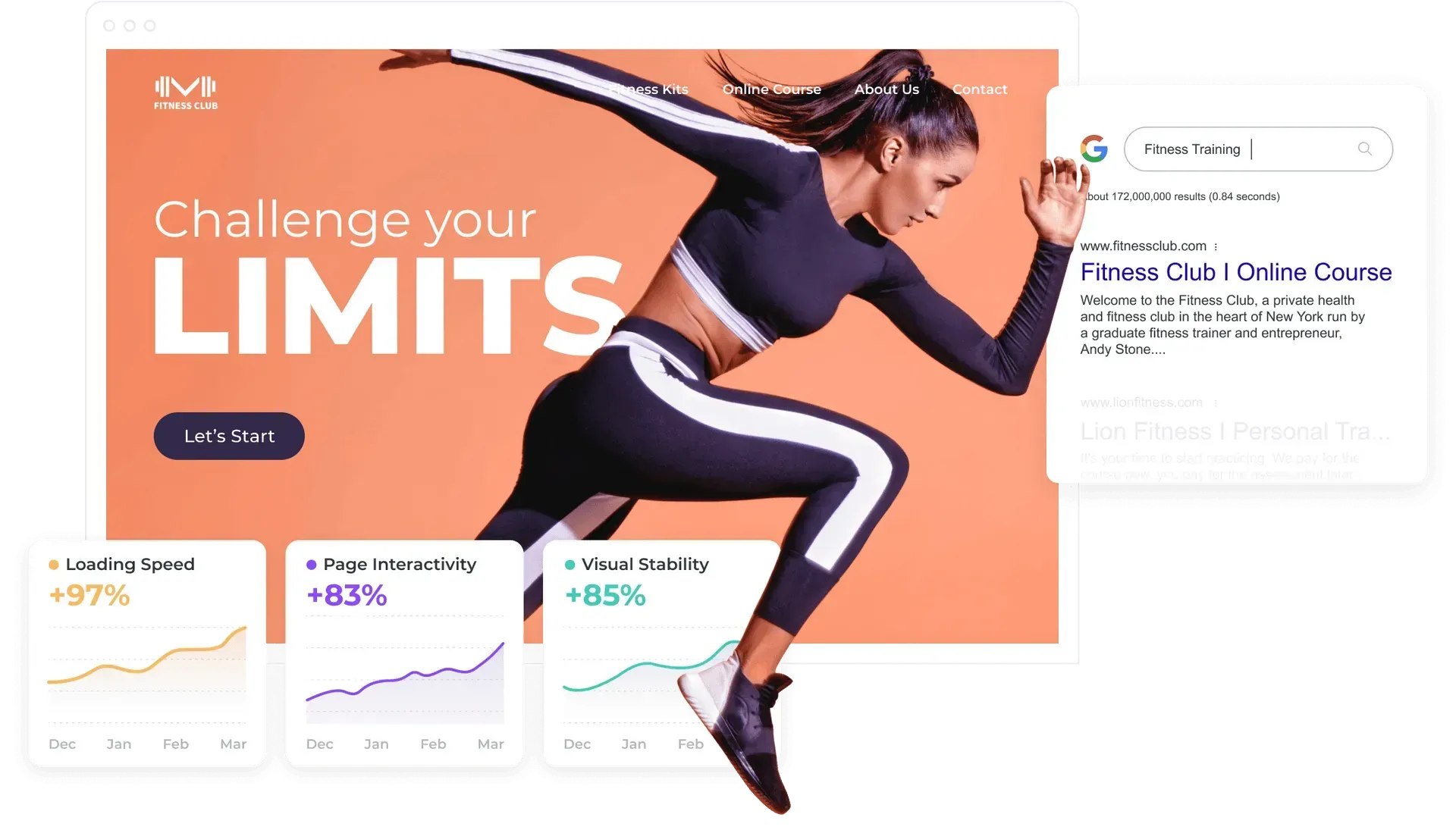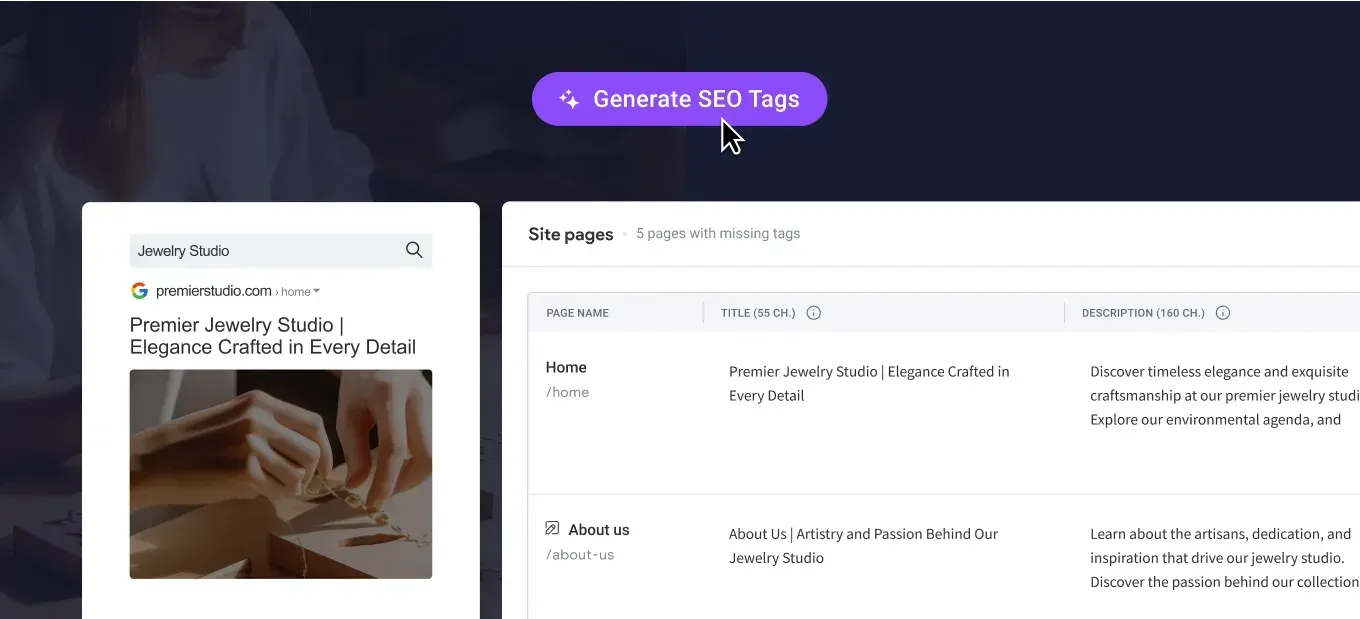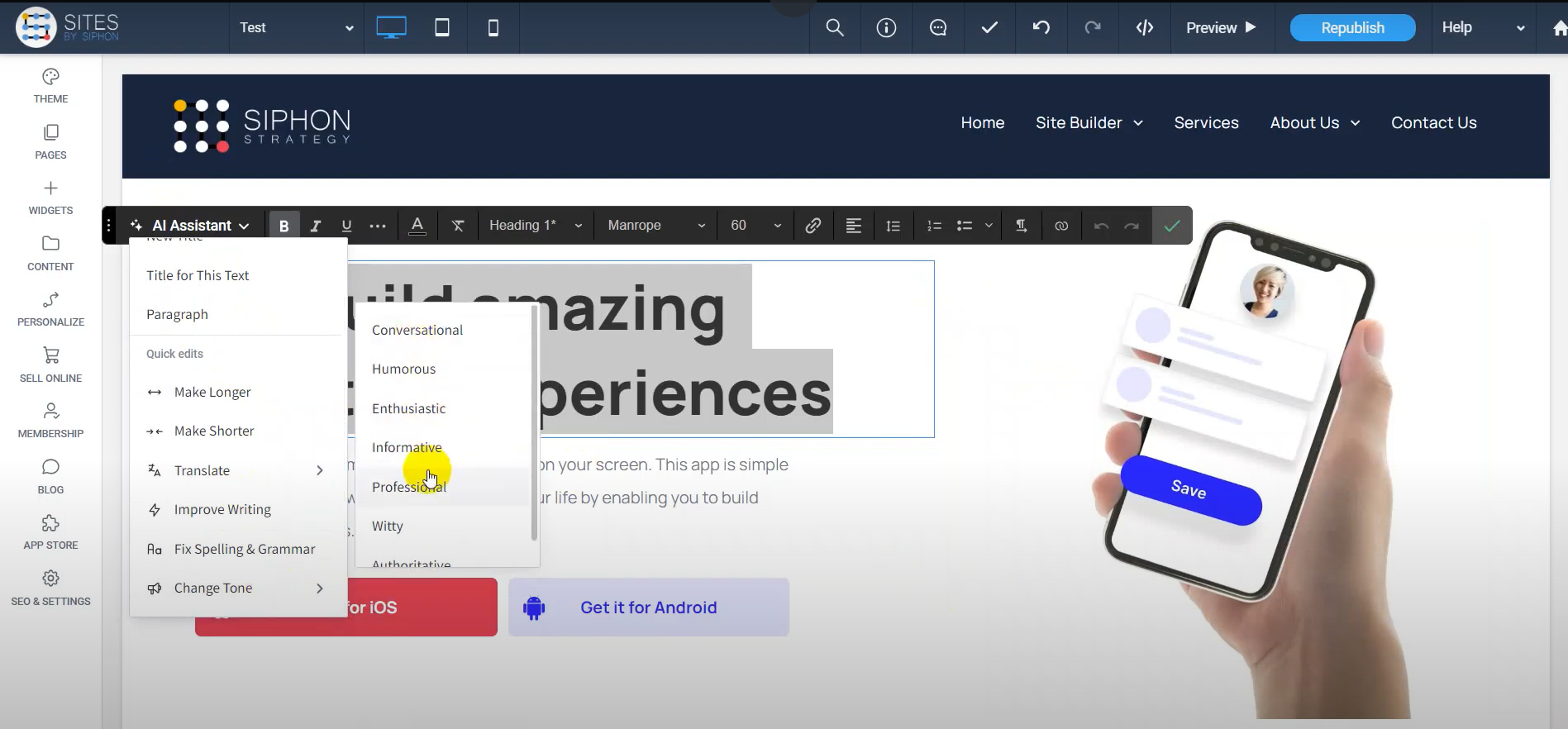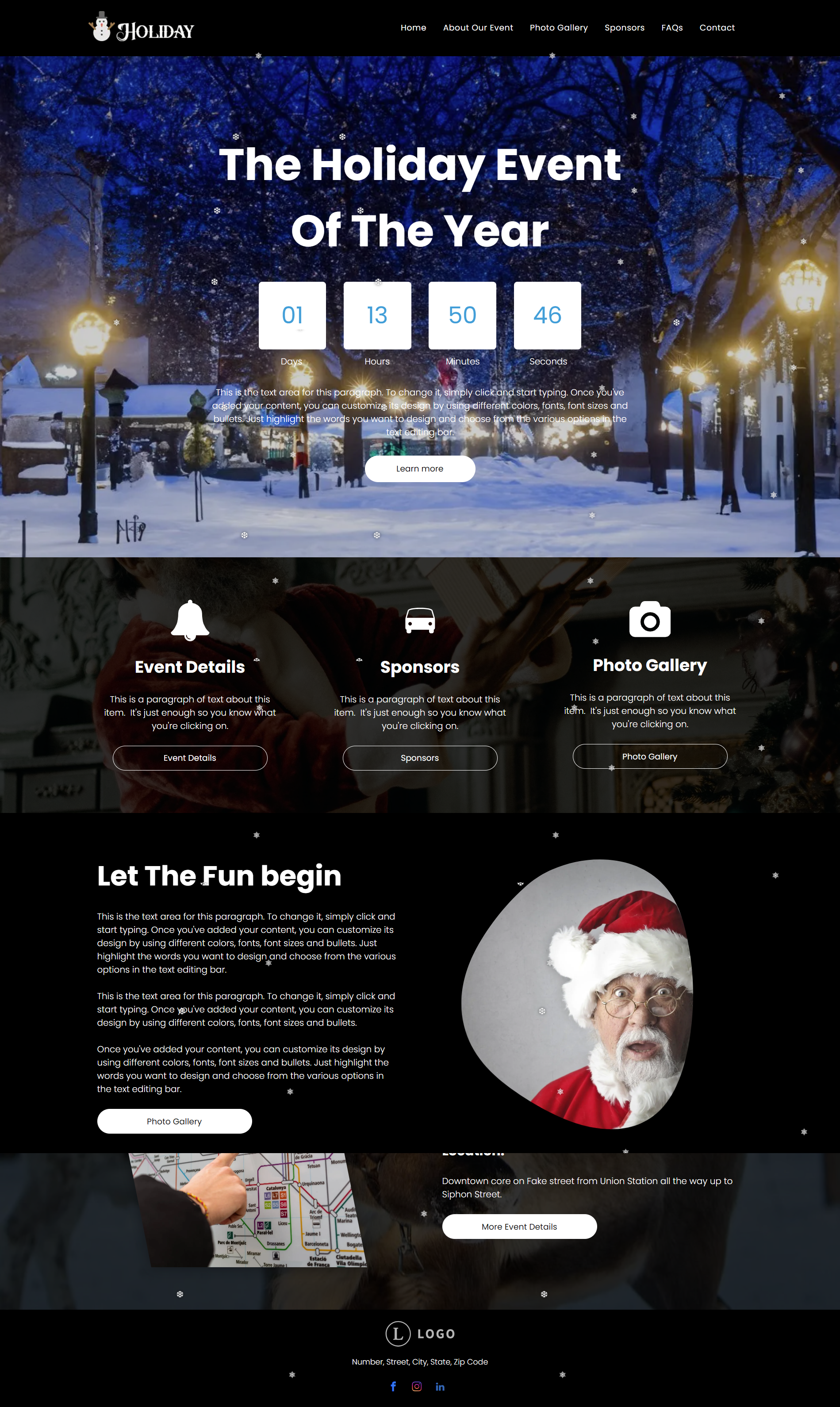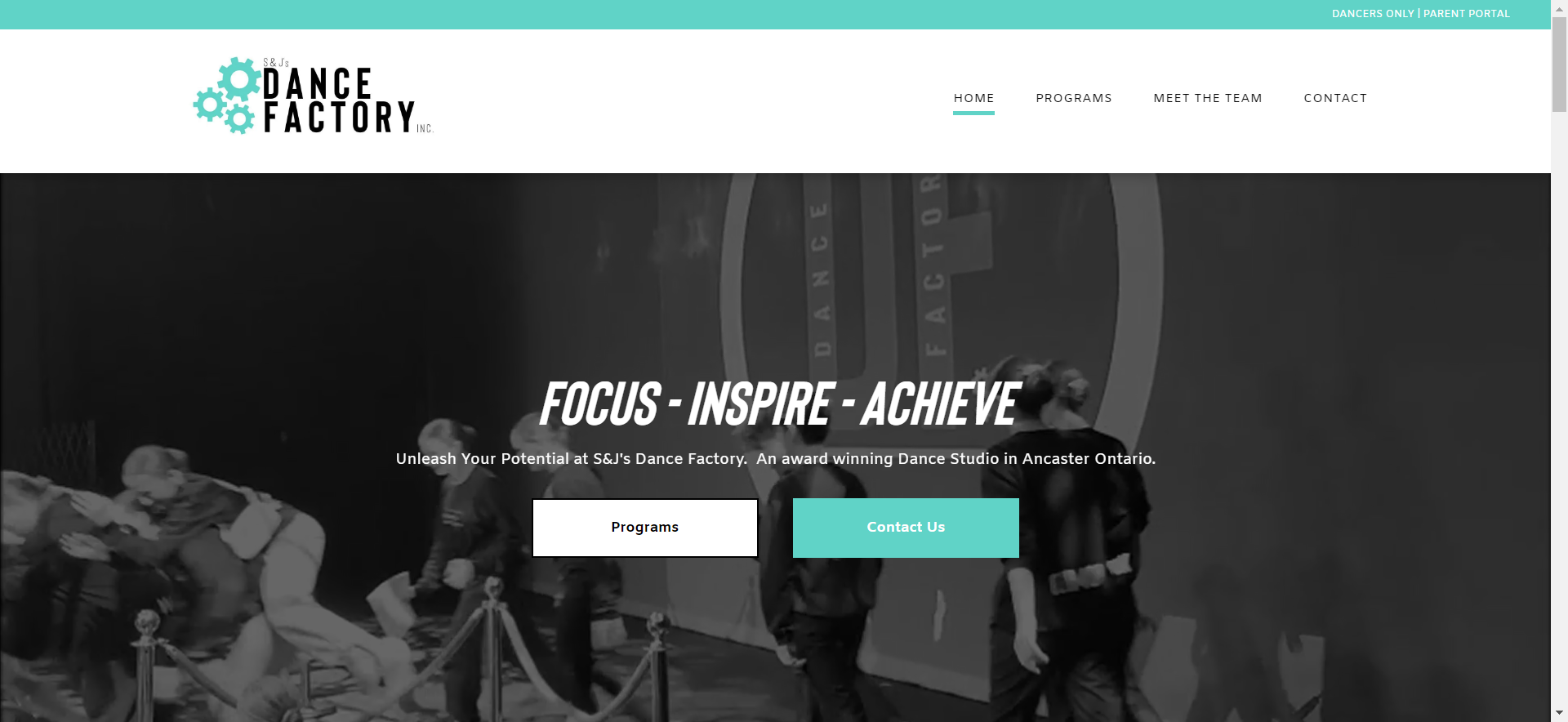The Siphon Blog
Product Updates, Tips, Tricks, Case Studies, & More.

Is it time to redesign your website? A modern, user-friendly site can be the difference between converting visitors and losing them. In this post, we cover four key signs that a redesign could be a game-changer, from updating an outdated design to improving SEO through re-platforming. Discover how a refreshed site can enhance user experience, boost performance, and increase conversions.

What is Local SEO and Why It Matters In today’s digital age, having a strong online presence is critical for businesses of all sizes. For small and local businesses, Local SEO (Search Engine Optimization) is an essential strategy to help potential customers find your business when they’re searching for services in your area. Local SEO focuses on optimizing your business's visibility in local search results, such as “near me” queries and searches for specific locations. Local SEO matters because it drives highly relevant traffic to your business—people who are actively looking for products or services nearby. In fact, 46% of all Google searches have local intent, and businesses that rank high in local search results can significantly increase foot traffic, phone calls, and sales. In this guide, we’ll walk you through the key strategies to dominate local search results and ensure your business is easily found by customers in your area. Whether you’re just getting started or looking to refine your existing SEO strategy, this guide will provide practical, actionable tips to help you grow your business. In this blog: Setting the Foundation for Local SEO On-Page SEO for Local Visibility Building Local Backlinks Managing Reviews and Reputation for Local SEO Leveraging Social Media for Local SEO Mobile Optimization and the Rise of Voice Search Tracking and Measuring Local SEO Success Creating a Winning Local SEO Strategy Chapter 1: Setting the Foundation for Local SEO Local SEO success starts with a strong foundation. Before diving into technical optimizations or content strategies, you need to ensure that the core elements of your online presence are properly set up. This chapter covers two fundamental components: optimizing your Google My Business (GMB) listing and ensuring consistent NAP (Name, Address, Phone) data across the web. 1.1. Claim and Optimize Your Google My Business (GMB) Listing Google My Business (GMB) is the cornerstone of Local SEO. It’s the primary way Google displays your business information in local search results, including Google Maps. If you haven’t already claimed your GMB listing, it’s the first step toward improving your local visibility. Steps to Claim and Verify Your GMB Listing: Go to Google My Business and sign in with your business’s Google account. Search for your business to see if it’s already listed. If it is, claim it. If not, create a new listing. Google will send a verification postcard to your business address. Once you receive it, enter the verification code to verify your listing. Optimizing Your GMB Listing: Once your business is verified, the next step is optimizing your GMB profile to make sure it’s complete and accurate: Correct NAP: Ensure your business name, address, and phone number are consistent with your website and other listings. Business Categories: Choose the most relevant primary category for your business, and add additional categories if applicable. Hours of Operation: Provide accurate hours of operation, including special hours for holidays. Business Description: Write a concise but informative description that includes local keywords. Images and Reviews: Upload high-quality images and encourage satisfied customers to leave positive reviews, as these significantly impact your local rankings. 1.2. Consistent NAP Across the Web Consistency is key when it comes to Local SEO. Google relies on signals from various online sources to verify the accuracy of your business information. Inconsistent NAP data can confuse both search engines and potential customers, leading to lower rankings. To ensure consistency: Audit Your Listings: Make sure your NAP is the same across all major business directories, such as Yelp, Facebook, Bing Places, and local chamber of commerce websites. Use Citation Tools: Tools like Moz Local, Yext, or BrightLocal can help you manage and update your business listings across multiple platforms at once. Monitor Changes: Periodically check your listings to ensure no one has altered your information, as discrepancies can hurt your rankings. By ensuring that your GMB listing is fully optimized and your NAP information is consistent, you’ll be setting the stage for Local SEO success. Chapter 2: On-Page SEO for Local Visibility Once you’ve set up the foundational aspects of Local SEO, the next step is to focus on your website. On-page SEO ensures that your site is optimized for both users and search engines, particularly for local searches. This involves using local keywords, structured data, and more to help search engines understand your business’s relevance to local search queries. 2.1. Optimizing Your Website for Local Keywords Local keyword optimization is at the heart of on-page SEO. It involves strategically incorporating keywords that your target audience is likely to use when searching for businesses or services like yours in their area. Google needs to know not only what you do but also where you do it. Importance of Local Keyword Research To get started, you’ll need to perform keyword research to identify which search terms are most relevant to your business and local area. Tools like Google Keyword Planner, Moz, or SEMrush can help you find local search terms with high search volumes. When researching local keywords, look for: Geo-specific keywords: Keywor ds that include the name of your city or region (e.g., "best coffee shop in [City]"). Service-related keywords: Phrases that describe what your business offers, combined with location-based terms (e.g., "affordable plumbers near me"). "Near me" searches: Many people use "near me" in their search queries (e.g., "pizza places near me"). These are growing in popularity due to mobile and voice searches. Local Keyword Placement in Content Once you have identified the most relevant local keywords, you need to integrate them naturally into your website. Here’s where to place them: Title tags: Include local keywords in the title tags of your pages. The title tag is one of the first things Google and users see, so having a clear, optimized title is critical. Example: "Best Pizza in [City] – [Business Name]." Meta descriptions: This is the short description that appears below your title in search results. Use your local keyword in this space to entice users to click on your listing. Headings (H1, H2, etc.): Use local keywords in your page’s main heading (H1) and subheadings (H2, H3) to signal relevance. For example, an H1 might be: "The Best Pizza in [City]," and H2: "Why We’re [City]’s Top Choice for Authentic Italian Pizza." Content: Incorporate local keywords throughout your content. Write naturally, but ensure that your services and location are clear. Avoid keyword stuffing, as this can hurt your rankings. Mentioning local landmarks, neighborhoods, or areas you serve is also beneficial. Image alt text: Optimize the alt text of your images with local keywords. Example: "Image of a pizza at [Business Name] in [City]." URL structure: If possible, include local keywords in your URLs. For example: www.example.com/[city]-best-pizza. By optimizing these elements, you’ll improve the chances of your site ranking higher when people search for local services, driving more traffic and conversions. 2.2. Local Schema Markup (Structured Data) Schema markup, or structured data, is a powerful yet underutilized SEO tool that helps search engines understand specific details about your business. Implementing local business schema on your website provides Google with important information like your business name, address, phone number, and operating hours. This helps improve how your business appears in local search results, especially in rich snippets and knowledge panels. What is Schema Markup? Schema markup is a form of microdata that you add to your website’s HTML code to help search engines understand your content better. By using structured data specific to local businesses, you’re telling Google that your business serves a particular area, making it more likely to appear in local search results. Local schema markup can enhance your appearance in search results by: Displaying rich snippets (like reviews, ratings, and contact info) directly in search results. Helping voice assistants like Google Assistant or Alexa retrieve your business info when users perform voice searches. Implementing Local Business Schema Markup To implement local schema markup on your website, follow these steps: Choose your schema type: For local businesses, you’ll use the "LocalBusiness" schema type. You can also get more specific depending on your industry, like "Restaurant," "Dentist," or "Plumber." Generate the schema markup: Use tools like Google’s Structured Data Markup Helper to create the code for your business. It will walk you through adding fields like your business name, address, hours, and other relevant information. Add the markup to your website: After generating the code, you’ll need to embed it in the appropriate pages on your site. This typically goes in the HTML header or body of your website’s homepage or contact page. Test your structured data: Use Google’s Rich Results Test or the Schema Markup Validator to ensure your markup is correctly implemented and error-free. Structured data can significantly improve your business’s visibility in local search by helping Google show more relevant and detailed information to users. It’s an important piece of on-page SEO for local businesses. Chapter 3: Building Local Backlinks Backlinks, or inbound links from other websites to yours, are an important ranking factor for both traditional and local SEO. However, local backlinks have a unique focus: they need to come from other businesses, organizations, or publications in your local area. 3.1. Why Backlinks Are Critical for Local SEO Backlinks are considered a vote of confidence from other websites. The more high-quality backlinks you have, the more search engines like Google see your site as trustworthy and authoritative. For local businesses, having backlinks from local websites signals to Google that you’re a relevant player in your community. 3.2. Strategies to Earn Local Backlinks There are several ways to earn backlinks from other local businesses and organizations. Here are a few effective strategies: Partner with Local Businesses: Collaborating with local businesses is a great way to cross-promote your services and gain backlinks. For example, you could partner with a local café and offer a discount for customers who visit both locations. You can both promote each other’s websites with links. Sponsor Local Events or Charities: Sponsoring local events, such as community fairs, sports teams, or charity runs, often comes with the opportunity for a backlink on th e event’s website. It’s a win-win: you support your community while improving your SEO. Get Involved with Local Media: Reach out to local newspapers, blogs, and radio stations to share news about your business. Whether you’re launching a new product, hosting an event, or supporting a cause, getting a mention from local media can also lead to backlinks. Leverage Local Influencers: Local bloggers, social media influencers, and community leaders can provide valuable backlinks if they write or post about your business. Offer them a free product or service in exchange for an honest review or mention on their site. By focusing on local relationships and collaborations, you’ll be able to build a solid base of local backlinks that boost your website’s authority and local search rankings. Chapter 4: Managing Reviews and Reputation for Local SEO Online reviews play a significant role in how your business ranks in local searches. Not only do reviews help build trust with potential customers, but they are also an important ranking factor in Google’s local search algorithm. 4.1. The Impact of Reviews on Local Search Rankings Google uses customer reviews to gauge the quality of your business. Businesses with more reviews—especially positive ones—are more likely to rank higher in local search results. Additionally, reviews provide social proof that can convince potential customers to choose your business over a competitor. 4.2. How to Get More (and Better) Customer Reviews Getting more reviews can be as simple as asking your customers. Here are some strategies for encouraging customers to leave feedback: Ask in Person: If you have a physical location, train your staff to ask satisfied customers to leave a review on Google, Yelp, or Facebook. Follow Up with Emails: After a purchase or service, send a follow-up email asking for a review. Include a direct link to your Google My Business page to make it easy for them. Use Signage: Post signs in your store, on receipts, or at checkout asking customers to leave a review. 4.3. Handling Negative Reviews Even with the best service, negative reviews happen. The key is to respond professionally and use the feedback to improve your business. Here’s how to handle them: Respond Quickly: Address negative reviews as soon as possible to show you care about your customers’ experiences. Stay Professional: Keep your response polite, even if the review is unfair. Apologize for any inconvenience and offer to make it right. Use It as an Opportunity: View negative reviews as a way to improve. If multiple customers mention the same issue, consider adjusting your services or processes. Managing reviews properly not only helps with customer satisfaction but can also positively influence your local SEO performance. Chapter 5: Leveraging Social Media for Local SEO While social signals (likes, shares, comments) are not a direct ranking factor for Google, having an active social media presence can still impact your Local SEO. It can help build brand awareness, drive traffic, and indirectly influence your local rankings. 5.1. The Role of Social Signals in Local SEO When your business is active on social media, it can generate engagement from local users, which can, in turn, send positive signals to Google about your business’s relevance in the area. Shares and interactions on platforms like Facebook, Instagram, and LinkedIn can also drive traffic to your website, which boosts SEO. 5.2. Optimizing Your Social Media Profiles for Local SEO Here are some ways to ensure your social media profiles help with your Local SEO efforts: Use Local Keywords: Just like with your website, make sure to use local keywords in your social media bios, descriptions, and posts. Consistent NAP: Ensure your business name, address, and phone number are consistent across all social media profiles. Location Tags: Use location tags in your posts, especially on platforms like Instagram and Facebook, to make it clear where your business is located. Encourage Check-ins: Motivate customers to check in to your business on social media platforms. This helps increase your business’s visibility in local searches. By maintaining an active, optimized presence on social media, you’ll increase your local reach and indirectly improve your Local SEO. Chapter 6: Mobile Optimization and the Rise of Voice Search Mobile and voice search are two key trends that are shaping how people find businesses online. With the rise of mobile-first indexing and voice-activated assistants, optimizing for these search methods is essential for Local SEO. 6.1. The Importance of Mobile Optimization for Local SEO As of 2024, over 78% of local mobile searches result in an offline purchase. With more people using smartphones to search for local businesses, it’s crucial that your website is fully optimized for mobile. Here are some best practices for mobile optimization: Mobile-Friendly Design: Use responsive web design to ensure your site adapts to all screen sizes. Fast Loading Speed: Compress images, enable browser caching, and reduce unnecessary code to speed up your mobile site. Easy Navigation: Make sure buttons, links, and forms are easy to use on small screens. 6.2. Voice Search and Its Growing Impact on Local SEO With more people using devices like Google Home, Alexa, and Siri, voice search is becoming a key part of local search behavior. Voice queries tend to be more conversational and longer than typed searches, so optimizing for them requires a different approach. Here’s how to optimize for voice search: Focus on Question-Based Keywords: Many voice searches are in the form of questions (e.g., "Where is the best pizza place near me?"). Include these types of queries in your content. Optimize for Local Intent: Voice searches often have a local intent, so make sure your content highlights your location and services. Use Structured Data: Schema markup helps voice search devices find relevant information about your business more easily. By optimizing your site for both mobile users and voice search, you can capture a significant portion of local search traffic. Chapter 7: Tracking and Measuring Local SEO Success To ensure your Local SEO efforts are paying off, it’s important to track and measure your results. By monitoring key metrics, you can make data-driven decisions and continuously improve your strategy. 7.1. Key Metrics to Track for Local SEO Here are some of the most important metrics to monitor: Google My Business Insights: GMB offers valuable insights into how many people viewed your listing, clicked to call, or requested directions. Organic Traffic: Use Google Analytics to track how much traffic your site is getting from local searches. Keyword Rankings: Track your local keyword rankings using SEO tools like Moz, Ahrefs, or SEMrush. Reviews: Keep an eye on the number of reviews and your average rating across platforms. 7.2. Tools for Managing and Tracking Local SEO Performance Here are a few tools that can help you monitor your Local SEO efforts: Google Analytics: Track website traffic and user behavior. Google Search Console: Monitor keyword performance and indexing issues. Moz Local: Track local keyword rankings and citation consistency. BrightLocal: Monitor reviews, local rankings, and citations across multiple platforms. If you're a Siphon Sites customer, we have some of these tools built right in, but we still recommend the two Google options for a deeper dive. Creating a Winning Local SEO Strategy Local SEO is an ongoing process that requires consistent attention and optimization. From claiming your GMB listing to earning local backlinks, there are numerous strategies that can help your business rank higher in local search results. The key is to start with a strong foundation—optimized listings, a mobile-friendly site, and accurate NAP data—and then build on that with ongoing efforts like content optimization, review management, and link building. By staying active in your community, both online and offline, you’ll not only improve your search rankings but also build lasting relationships with your customers. If you need expert help creating a customized Local SEO strategy for your business, reach out to us here at Siphon Strategy. We’re here to help you attract more local customers and grow your business!
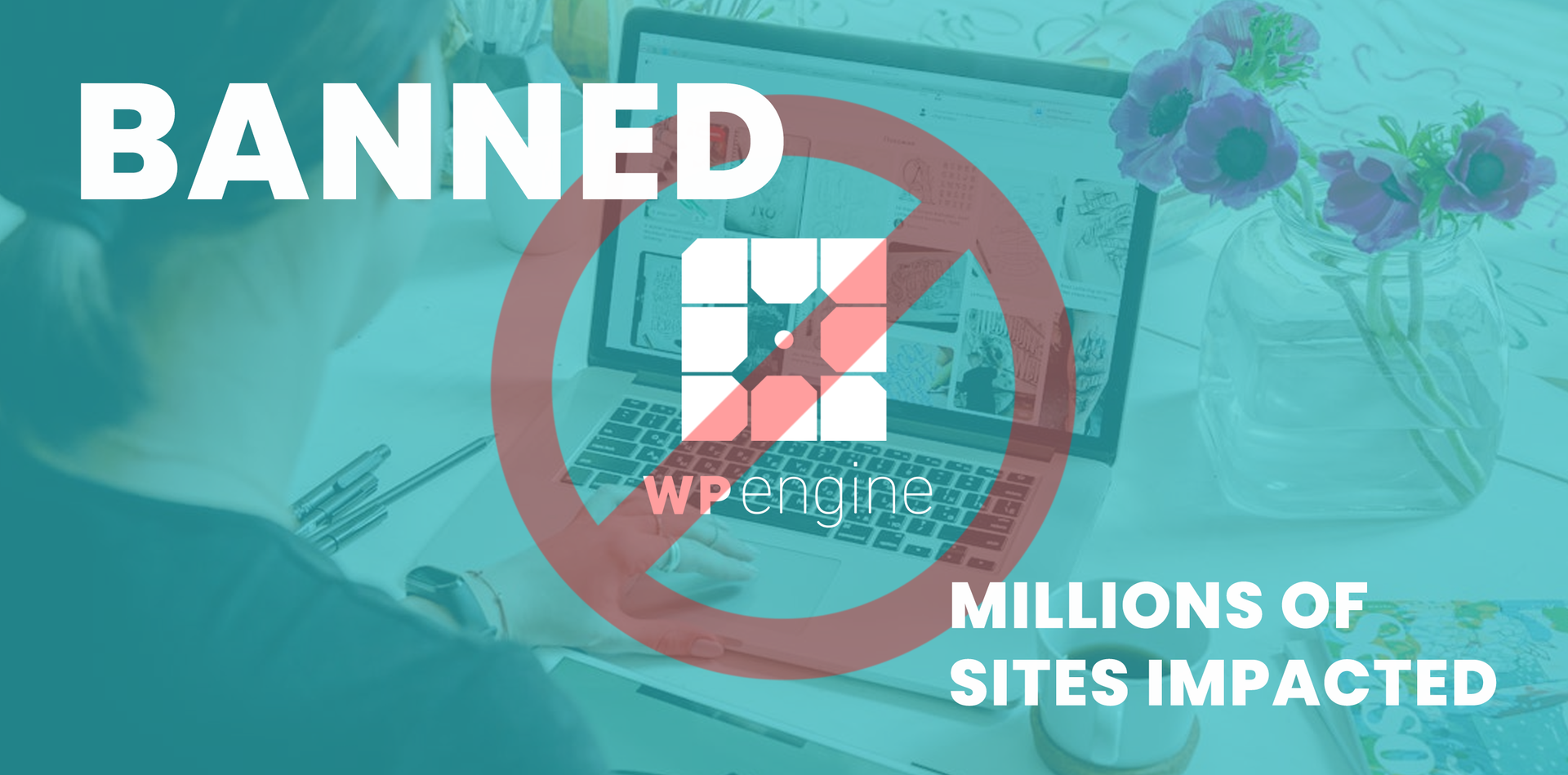
For years, WordPress has been the dominant content management system (CMS) for businesses and developers alike. But as recent events have shown, this once-dependable platform may no longer be the best choice for everyone. With the recent ban of WP Engine from accessing WordPress.org’s resources, users are beginning to rethink their commitment to WordPress. If you’re looking for a more reliable, hassle-free alternative to WordPress—without the need for constant updates, plugins, and security concerns—this post is for you. We'll explore why this recent development might be the last straw for some users, and introduce Siphon Sites, a platform that offers a simpler, all-in-one solution. The WP Engine Ban: What Happened? The controversy between WordPress.org and WP Engine escalated recently, resulting in WP Engine, one of the largest managed WordPress hosting providers, being banned from accessing crucial WordPress.org resources like themes, plugins, and updates. Matt Mullenweg, the creator of WordPress, accused WP Engine of profiting from WordPress without contributing enough to the open-source ecosystem. This ban not only affects WP Engine but also millions of users who rely on its services to manage their WordPress sites. If you're on WP engine, what does this mean for your website? WP Engine customers can no longer install or update plugins or themes, which introduces significant risks, particularly around security vulnerabilities. For many, this incident has highlighted the fragility of relying on third-party platforms like WordPress. It's a wake-up call, pushing users to explore more dependable, integrated alternatives that don’t require navigating these kinds of governance issues. The Growing Problem with WordPress While this ban has drawn attention to the governance issues within WordPress, it’s part of a broader set of problems that have been brewing for years. For many users, WordPress has evolved into a complex, high-maintenance platform that requires constant attention. Here are some of the key challenges that have led users to seek alternatives: 1. Constant Updates and Plugin Management One of the most frustrating aspects of running a WordPress site is the constant need for updates. Whether it’s updating the core WordPress software, the dozens of plugins your site relies on, or ensuring that your themes are compatible, managing a WordPress site requires a lot of time and technical know-how. If you don’t stay on top of these updates, your site can become vulnerable to security breaches or, worse, break entirely due to plugin conflicts. 2. Security Concerns As the world’s most popular CMS, WordPress is also a major target for hackers. Each plugin or theme you add to your site increases its vulnerability to attack. If you’re not an expert in web security, keeping your site safe can become a full-time job. The recent WP Engine ban exacerbates this issue, as it limits users’ ability to update key plugins—an essential step in keeping their sites secure. 3. Lack of Control Over Your Website The WP Engine ban also raises questions about who really controls your website. Decisions made by companies like Automattic can have far-reaching consequences for hosting providers and site owners alike. If your hosting provider is suddenly banned, what happens to your site? This has left many feeling like they don’t truly own or control their websites. Exploring Alternatives to WordPress: Pros and Cons of Popular Platforms If you’re ready to move away from WordPress, there are several alternatives available. Below, we’ll break down the pros and cons of some of the top platforms, comparing them to Siphon Sites, so you can make an informed decision based on your needs.

Discover how to streamline your website content management with Siphon Sites Collections. In this guide, we explore the benefits of using Collections, from ensuring consistency across your site to enhancing SEO and user experience. Learn how to create, populate, and display Collections, and see real-world applications like theatre show listings, team bios, services, and archives. Simplify your content updates and deliver a better experience for your visitors with Siphon Sites Collections.

Discover why we made the switch from WordPress to Siphon Sites! In this blog post, we delve into the challenges we faced with WordPress, including security vulnerabilities, performance issues, and maintenance complexity. Learn how Siphon Sites addresses these issues with an intuitive drag-and-drop editor, built-in security features, and superior performance. If you’re looking for a more reliable, user-friendly, and secure website platform, this post is a must-read. Explore the benefits of Siphon Sites and how it can enhance your online presence today.

Unlock the full potential of your online presence with our guide to the top 10 features to look for in a website builder platform. Learn how to choose the right tools to create a professional, high-performing website effortlessly. Discover the benefits of drag-and-drop editors, responsive design, SEO tools, and more, ensuring your site stands out and meets your needs. Ready to build your dream website? Explore our tips now and see how Siphon Sites can help you achieve your goals!
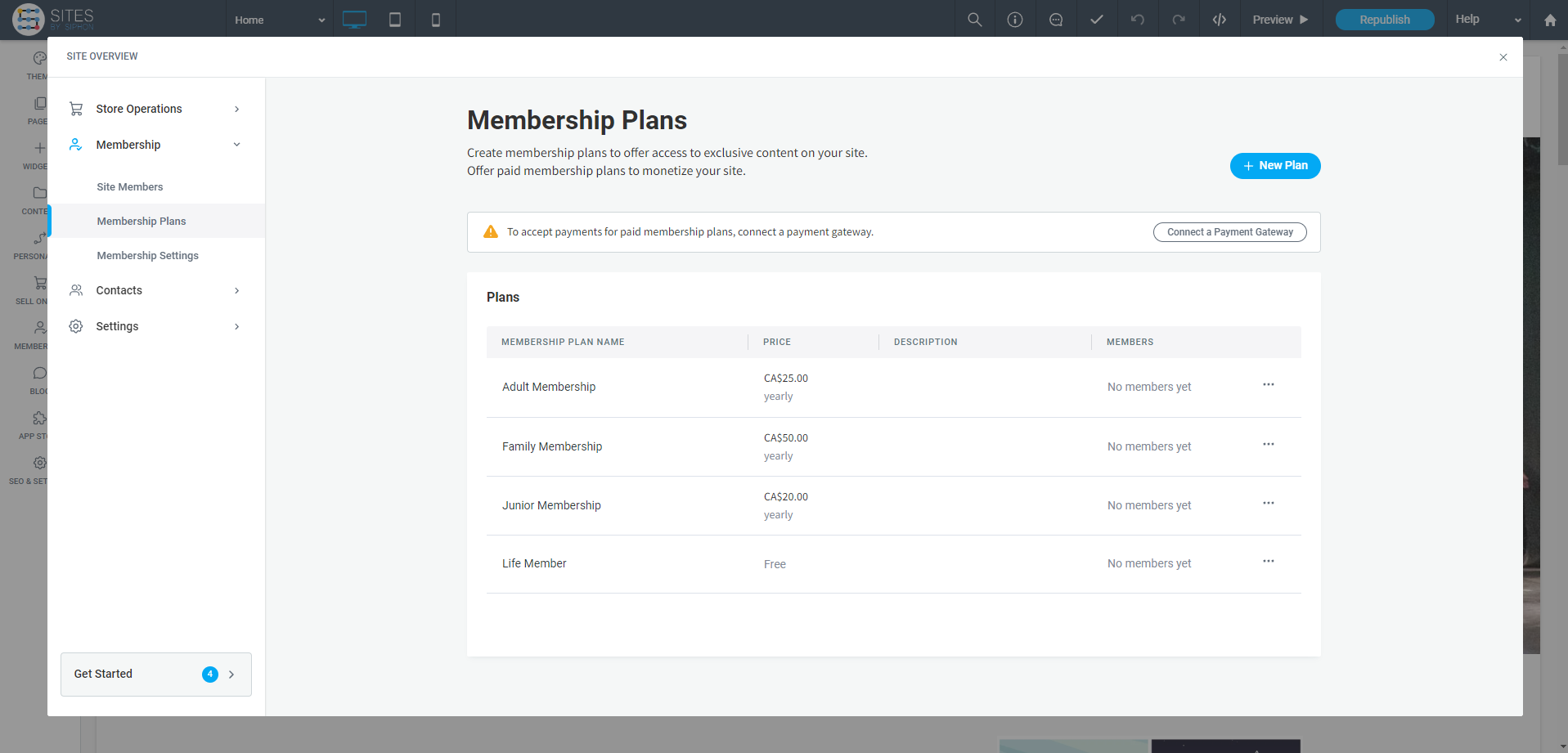
Are you ready to transform your expertise or content into a thriving membership site? Using Siphon Sites you can easily create a professional and engaging membership site. Here’s a step-by-step guide to get you started, with a special focus on developing high-quality content that your audience will love. How Will You Use Membership In Your Business? Before you start building, think about the type of membership site that will best serve your audience and business goals. Here are some popular membership ideas: Members-Only Store: Offer exclusive products or services. Podcast Sites: Share premium, ad-free podcast content. Online Courses: Provide in-depth courses and tutorials. Online Communities: Create a private forum or group for discussions. Professional Services: Offer consulting or coaching exclusively for members. Employee Portals: Give employees access to internal resources and updates. Lead Generation Sites: Exchange valuable content for member sign-ups. Event Calendars & Event Registration: Organize exclusive events for members. Step 1: Understand Your Audience and Their Needs Customer Need: Your audience needs content that solves their problems, entertains them, or helps them achieve their goals. Without valuable content, they won’t see the benefit of subscribing to your membership. Before you can write it, you must know thy audience . Your Action / Next Step: Start by researching your audience. What are their pain points? What type of content do they currently consume and value? Use surveys, social media polls, and direct feedback to gather insights. Step 2: Create High-Quality, Valuable Content Customer Need: High-quality content is the cornerstone of a successful membership site. Your members need to feel that they’re getting their money’s worth. Without something worth paying for, it's not worth the effort setting up your membership site (even if we do make it easy ) Your Action / Next Step: Plan a content calendar to ensure you deliver fresh, valuable content consistently. You can use Siphon Sites’ tools to create engaging, well-structured content that addresses your audience’s needs. Step 3: Set Up Membership Plans and Billing Customer Need: Members need flexible payment options that fit their budget and commitment level. Your Action / Next Step: Define your membership tiers and pricing strategy. Ensure that each tier offers unique value. Set up your plans in Siphon Sites and clearly communicate the benefits of each tier to potential members. Step 4: Secure Your Membership Site Customer Need: Members need to trust that their data and content are secure. Your Action / Next Step: Inform your members about the security measures you have in place. Highlight the secure sign-up and payment processes to build trust. I know, this is a shameless plug, but on our platform you'll benefit from top-notch security features, including secure hosting, GDPR compliance, and password-protected access. Step 5: Engage and Retain Your Members Customer Need: Engagement is key to retaining members. They need to feel valued and part of a community. Your Action / Next Step: Develop a member engagement strategy. Plan regular interactive events, respond to member feedback, and continuously improve your offerings based on member interactions. Use the platform to create interactive elements like forums, live Q&A sessions, and exclusive webinars. Manage members easily and offer personalized content based on their interactions. Final Reminder: The Importance of Good Content Creating a successful membership site isn’t just about setting up a platform; it’s about delivering consistent, high-quality content that your audience values. Remember, building a loyal membership base takes time and effort. Focus on understanding your audience, delivering valuable content, and engaging with your members to create a thriving membership site with Siphon Sites. By following these steps, you’re well on your way to launching a successful membership site that not only meets your business goals but also provides immense value to your members. Happy building!

When choosing a partner to build and manage your website, it can be tempting to go with a large, well-known agency. However, big agencies often come with significant drawbacks that can hinder your business’s growth and digital presence. Here’s why opting for a smaller, more focused service might be a better choice: 1. Higher Costs: Large agencies often come with a hefty price tag. They have higher overhead costs, including expensive office spaces, large teams, and extensive marketing budgets, which are passed on to clients. Smaller agencies or specialized platforms like Siphon can provide the same quality of work at a fraction of the cost, without the added financial burden. 2. Slower Turnaround Times: Big agencies typically manage hundreds of projects simultaneously. This can lead to slower turnaround times as resources are stretched thin and projects must wait in line. Smaller partners can offer quicker, more personalized service, ensuring your website is up and running in a timely manner. How fast? Where a larger agency will take 3 months to build a small business website, we can often get it done in under two weeks . 3. Lack of Personalized Attention: In a large agency, your project may not always be a top priority. With many clients to juggle, it’s easy for your unique needs to get lost in the shuffle. Smaller agencies, on the other hand, often provide more personalized attention, tailoring their services to fit your specific requirements and ensuring your project gets the focus it deserves. 4. Less Flexibility: Big agencies often have rigid processes and standardized solutions. While having a solid project plan is important for big projects, like eCommerce, it's not always the right solution for getting a smaller website off the ground. This lack of flexibility can be a disadvantage if your project requires a unique approach or quick adjustments. Smaller teams are typically more agile and willing to adapt to changes, providing more customized and responsive solutions. 5. Generic Solutions: Large agencies may offer a one-size-fits-all approach, leading to generic solutions that don’t fully capture your brand’s essence. The pick a template, fit your business into it, and try to get it done with as much attention to their own profit as possible. Smaller agencies that focus on your specific needs can provide more creative and tailored solutions that truly reflect your business’s identity. You're just more likely to get someone who cares about providing a uniquely you solution. 6. Communication Barriers: In a big agency, you might find yourself dealing with multiple points of contact, leading to potential miscommunications and delays. Smaller agencies usually offer more direct lines of communication, making it easier to convey your vision and receive timely updates. Oftentimes, you're talking directly with the person doing the work (that's how we roll). 7. Misaligned Priorities: Big agencies may prioritize high-paying clients or larger projects, leaving smaller businesses feeling sidelined. By choosing a smaller, dedicated service, you ensure that your project is valued and receives the attention it deserves, regardless of your budget size. Conclusion: While large agencies might have the allure of big names and extensive portfolios, they often come with drawbacks that can impact your business’s digital growth. We're not trying to slam large agencies here. For absolutely massive projects, a larger agency may have more resources for things like custom application development. What we are saying is that for a small business, getting out of the large, hourly billing machine is likely going to get you much more personalized, and tailored service. Opting for a smaller, more focused partner can provide cost-effective, personalized, and flexible solutions tailored to your specific needs. Ultimately, the choice is yours. If you are interested in Siphon as that small agency solution, feel free to Contact Us .

If you’re new to the world of websites, the term “SEO” might sound like jargon from a techie’s dictionary. However, SEO—short for Search Engine Optimization—is a crucial concept that can help your website get noticed by people searching for information online. Let's break down the basics of SEO in a simple, non-technical way, and show you how you can start optimizing your site today. What is SEO? SEO stands for Search Engine Optimization. It’s the practice of improving your website so that it ranks higher on search engine results pages (SERPs) like Google, Bing, and Yahoo. When someone searches for something related to your site, good SEO helps your website appear closer to the top of the results. This increases the chances that people will visit your site. Who Controls Search Results? Search engines like Google use complex algorithms to determine which websites show up when someone searches for a particular term. These algorithms consider various factors such as the relevance and quality of your content, how user-friendly your site is, and how fast it loads. While no one outside these companies knows the exact formula, following best practices for SEO can help your site rank better. Important Note: Anyone who tells you they can get you to the top of the search results fast, is selling you something they don't actually control. There is not magic button, other than paid ads, that will boost you to the top. Organic search rankings come from good content - that's it. If you mention a keyword 3 times across your entire website, you just can't going to rank for it, regardless of what a money-hungry cold email said. (Can you tell we're sick of SEO scammers?) Keyword Strategy Basics Keywords are the words and phrases that people type into search engines. For instance, if you own a bakery, potential customers might search for “best cupcakes in [Your City].” Identifying the right keywords to use on your website is crucial for attracting the right audience. How to Find Keywords: Think Like a Customer: What would you type into a search engine if you were looking for your product or service? Use Tools: Free tools like the SEM Rush Keyword Planner can help you find popular keywords related to your business. Analyze Competitors: Look at the keywords your competitors are using by checking their websites. You can do a search for "Keyword Density Checker" and find various tools that will tell you which keywords they are likely to rank for, based on density in their content. How to Use Keywords: Include them naturally in your titles, headings, and throughout your content. Don’t overuse them—this is called “keyword stuffing” and can hurt your rankings. Don't try to rank for everything under the sun. Come up with 5 to 10 key themes and go after them. You can expand later. Content is Everything : Be the Authority by Writing About a Topic Search engines prioritize websites that provide valuable, relevant information. This means your content should aim to answer questions and provide insights on topics related to your business. Regularly adding high-quality content can establish your site as an authority in your field. Adding a keyword once is never going to beat out your competitors. Tips for Great Content: Answer Common Questions: Think about what your customers often ask and write blog posts or articles that provide answers. Stay Relevant: Keep your content focused on topics related to your business. Be Clear and Concise: Make your content easy to read and understand. Blogs: Having a blog is a great way to write frequently about various topics, without cluttering up your sales pages. Cheat Mode: Use ChatGPT for Writing Blogs Creating content can be time-consuming, but tools like ChatGPT can help you generate ideas and even draft blog posts. ChatGPT is an AI tool that can write content based on the prompts you give it. How to Use ChatGPT: Generate Ideas: Ask ChatGPT for blog post ideas on topics related to your business. Draft Posts: Provide ChatGPT with a topic and let it generate a draft that you can edit and refine. Optimize Content: Use the draft as a starting point, ensuring that your keywords are naturally integrated and the content is relevant and informative. Example Prompt: “Write a blog post about the benefits of fresh-baked bread. My audience are not chefs, so keep it simple. Don't over sell. This should be helpful, friendly information and not a sales pitch.” Setting Realistic Expectations: SEO Takes Time One of the most important things to understand about SEO is that it’s a long-term strategy, not a quick fix. While it would be great if you could implement some changes and see immediate results, the reality is that SEO takes time to show its full benefits. How Long Does SEO Take? SEO is an ongoing process, and it typically takes several months to start seeing significant improvements in your search engine rankings. On average, you might begin to notice changes in your traffic and search rankings within 3 to 6 months, but it can take up to a year or more to see the full impact of your efforts. This timeline can vary depending on factors such as the competitiveness of your industry, the quality of your content, and how well your website is optimized. Beware of Instant Results Promises You might come across offers from companies promising to get your website to the top of search results in just a few days. Be cautious—these promises are often too good to be true. SEO requires patience and consistent effort. Strategies that promise instant results often involve tactics that can harm your website in the long run, such as keyword stuffing or buying backlinks, which can lead to penalties from search engines. The Importance of Consistent Effort Instead of looking for quick fixes, focus on building a strong, sustainable SEO strategy. Search engines favor websites that provide fresh, relevant content. Make a habit of adding new blog posts, updating old content, and ensuring all information is current. Your Action Steps Identify Keywords: Use tools to find relevant keywords for your business and integrate them naturally into your content. Create Quality Content: Regularly add informative and valuable content to your website. Use tools like ChatGPT to help generate ideas and drafts. This is, by far, the most effective SEO strategy you can do. Monitor and Adjust: Keep an eye on how your content performs using basic analytics tools, and adjust your strategy as needed. By understanding the basics of SEO and creating quality content, you can help your website get noticed by more people. Remember, SEO is not a one-time task but an ongoing process that requires regular attention and updates. Start with these simple steps, and you’ll be well on your way to improving your site’s visibility and attracting more visitors.

In today's digital age, having an online store isn't just for large-scale businesses—it's for everyone. Whether you're a small business owner, an artist, a service provider, or a nonprofit, setting up an eCommerce platform can be straightforward and highly rewarding. At Siphon, we understand that diving into eCommerce might seem daunting, especially if you've never considered it before. That's why we've designed an intuitive, built-in eCommerce solution that makes it easy for anyone to start selling online. Let's explore how Siphon Sites can help you unlock the full potential of your eCommerce ventures, no matter your business size or experience level. 1. Physical Products: Sell Merchandise and More Whether you’re selling merchandise, apparel, or other physical goods, our eCommerce platform is designed to make the process as smooth as possible. You can easily set up your product catalog, manage inventory, and handle shipping options all from one place. With an intuitive interface and powerful tools, Siphon Sites ensures that you spend less time managing your store and more time focusing on growing your business. Friendly Tip: Start by listing your top-selling items first. Use high-quality images and detailed descriptions to attract and inform potential buyers. Remember, clear and concise information helps your customers make confident purchasing decisions. 2. Digital Products: Embrace the Digital Economy From e-books and digital prints to music and software, digital products open up a world of opportunities for online sales. You can effortlessly list, manage, and deliver digital products to your customers. Our platform handles everything from secure downloads to instant delivery, ensuring your customers have a seamless experience. The bet part about selling downloads, is that once your product is published, there is nothing for you to do. It's on complete auto-pilot ! Friendly Tip: Most of the work is done up front. Create a high quality product that's worth the price and then sit back, relax, and let the platform handle payment and delivery for you. 3. Services: Get Paid for Events, Classes, and More If your business revolves around offering services like events, classes, or gift vouchers, Siphon Sites has you covered. Our eCommerce solution allows you to easily create listings for your services, set schedules, and accept payments. Whether you're running a yoga studio, offering online courses, or organizing workshops, our platform streamlines the entire process. Friendly Tip: Clearly outline the details of your services, including schedules, pricing, and what participants can expect. Use testimonials and reviews to build trust and credibility. Consider offering special promotions or discounts for early bookings to boost attendance. 4. Donations: Support Causes Close to Your Heart For nonprofits and organizations looking to raise funds, Siphon Sites makes it simple to accept donations directly through your website. Our eCommerce platform supports various donation options, allowing you to create fundraising campaigns and track contributions. Whether you're raising money for a cause, charity, or project, our solution helps you connect with supporters and achieve your goals. Friendly Tip: Clearly communicate the mission and impact of your cause. Use compelling stories, images, and videos to engage potential donors. Make it easy for visitors to contribute by providing multiple donation options and suggested amounts. Why Choose Siphon Sites for Your E-Commerce Needs? All-In-One Solution: With Siphon Sites, you don’t need to juggle multiple plugins or platforms. Everything you need to run a successful eCommerce business is built right into our intuitive platform. You can manage your pages, blogs and products all in one place. Seamless Integration: Our eCommerce solution is built right into the platform, making it are seamlessly integrated into your website, ensuring a consistent and professional look and feel across all pages. User-Friendly Interface: Designed with simplicity in mind, our platform is easy to navigate, making it accessible even for those with limited technical expertise. Robust Features: From inventory management to secure payment processing, Siphon Sites offers a comprehensive set of features to support your eCommerce operations. Next Steps: Explore Our Features: Take a tour of our eCommerce solution and see how they can be tailored to your specific business needs. Get A Demo: Drop us a line and we'll setup an online meeting of Google Meet. We'll give you a tour of the platform, give you transparent pricing and answer all of your questions. With Siphon Sites , we're here to support your eCommerce journey every step of the way. Embrace the power of our built-in solution and take your online business to new heights.

Unlock the Secrets to User-Friendly Web Design! Discover three essential tips for creating a seamless website experience. Learn to captivate your audience with clear headlines, streamline content for easy comprehension, and provide intuitive navigation. Simplify, engage, and keep your visitors coming back for more!





